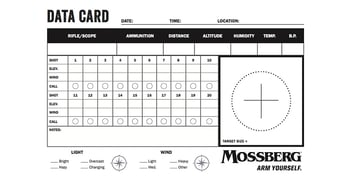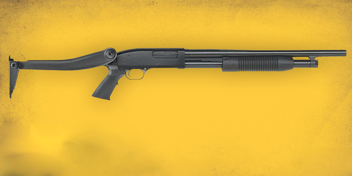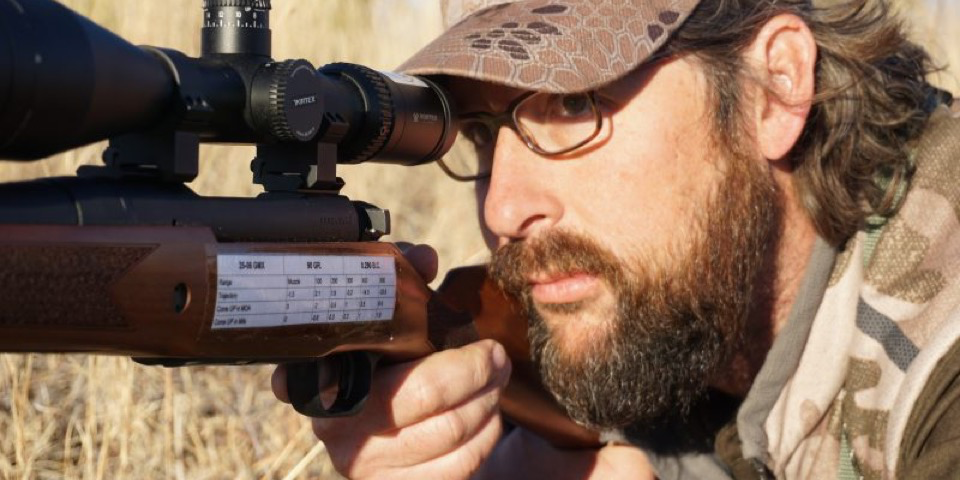
Achieving maximum accuracy downrange is the ultimate goal of any hunter or shooter, whether they plan on firing at long-range targets or not. Knowing exactly where your bullet will hit not only ensures a clean kill, it also boosts a shooter’s confidence and helps discover the best ammunition for each particular rifle in the arsenal.
One of the best ways to know where a projectile will impact at known ranges is to create a Dope Card for your rifle-ammunition pairing. There’s no consensus on what the acronym D.O.P.E. stands for, but you’ll see it referred to as either Data on Personal Equipment or the more "tactic-cool" Data Observed from Previous Engagements. I like to use the word’s woodsman-esque use of doping the wind or holdover. However, you prefer to define it, knowing your rifle’s dope just means understanding how to adjust the aiming point for bullet drop and/or wind drift. Think of it as a recipe for maximum accuracy.
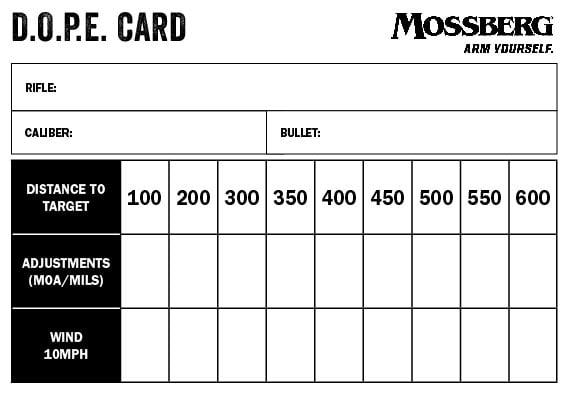 Creating a dope card is easy, particularly if you use one of the many ballistics calculators available on the Internet. Almost all major ammunition manufacturers have them for their factory loads, and there are other independent calculators for those hunters who prefer to hand-load or shoot more obscure calibers or bullets/powder combos.
Creating a dope card is easy, particularly if you use one of the many ballistics calculators available on the Internet. Almost all major ammunition manufacturers have them for their factory loads, and there are other independent calculators for those hunters who prefer to hand-load or shoot more obscure calibers or bullets/powder combos.
Before building out a dope card, gather as much information possible about the ammunition you are shooting. Other than caliber, of course, muzzle velocity is probably the most important. Factory-loaded cartridges will have this listed somewhere on the box, although for maximum accuracy it pays to invest in a chronograph to dial in the exact velocity your rifle is spitting out. Like any good recipe, the quality of the ingredients you put into it directly correlates to the result. The other data necessary for a Dope Card is the ballistic coefficient for the bullet you are shooting (found on the box of the manufacturer’s Website), the distance at which your scope is zeroed and the height of your sight concerning the center of the bore.
Plug that information into the ballistic calculator of your choosing and watch it spit out your dope data, which will include bullet drop in inches, MOA, Mils, or other sight adjustment systems. Most calculators allow you to choose at what yardage markers you want the data listed. For hunting deer-sized game, I find 100-yard increments to work well, but for varmint shooting or punching holes in paper, you may want to dial that down to 50- or even 25-yard increments. Most also will have the option of listing wind drift as well. That’s good info to have, but try to keep the sheet as simple as possible to eliminate confusion at the moment of truth.
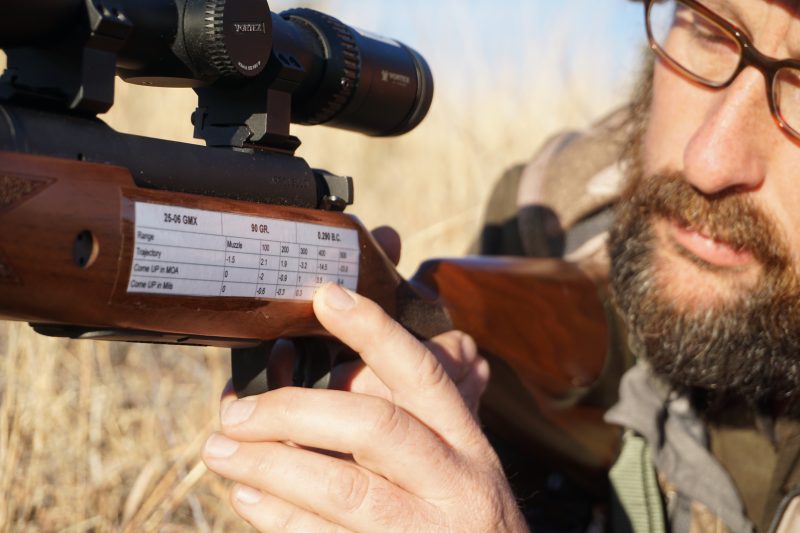
Once you have all the dope on your rifle/ammunition combo, you can transfer it to a spreadsheet or document to print. Many ballistic calculators also have the option of creating printable dope cards as well. I suggest laminating the paper Dope Card and attaching it to your optics with a lanyard or zip-tie. Better yet, print it in a readable size that can be taped directly to your rifle for quick reference in the field or on the range.
Mossberg Patriot Walnut (#27876) in .25-06
My Mossberg Patriot in .25-06, paired with Hornady’s 90-grain GMX bullet is as accurate a combo as I’ve come across. With the information listed on my Dope Card, I’ve used it to take a Coues deer at 375 yards and an Aoudad at nearly 200. With the former, I used simple Kentucky windage, knowing from my Dope Card the bullet would drop 14-inches right into the deer’s boiler room. For the Aoudad, I referred to the card, saw the point of impact was two inches above zero (which I had set up at 286 yards using a Maximum Point Blank Range formula) and held accordingly. Both animals were hit perfectly.
Knowing where the bullet is going to impact at extended ranges is just one piece of the accuracy puzzle, albeit a very important run. While the Dope Card gives you that information, actually hitting mid-and long-range targets requires plenty of range time. Only through practice will hunters be able to ethically take those shots at the distant game, but with a Dope Card, the knowledge and confidence to make the shot will be close at hand.


